Red Deer Diet & Feeding Behaviour
An interesting collaboration between German anatomist Reinhold Hofmann and Kenyan game biologist D.R.M. Stewart led to the publication, in 1972, of a paper in the journal Mammalia in which the scientists argued that all Ruminants could be split into groups based on their feeding strategy. Traditionally, ruminants such as deer had been considered either ‘grazers’ or ‘browsers’ according to how they fed. Hofmann and Stewart proposed that there were actually three groups: concentrate feeders (i.e. the browsers); grazers (eat grass and other roughage); and intermediate feeders (which graze and browse).
Accordingly, the biologists grouped the ruminants such that about 40% (including moose and Roe deer) were concentrate feeders, 25% (including sheep and cattle) were grazers and the remaining 35% were intermediate feeders, which “choose a mixed diet but avoid fibre as long and as much as possible” – Red deer were included within this group. In a 1989 paper on the subject to the journal Oecologia, Hofmann re-affirmed these groupings and wrote of the Red deer:
“When forage plants lignify [become ‘woody’] these animals switch to ‘browse’ or falling fruit and seeds (‘autumn mast’) and finally reduce their metabolism and food intake as they, like CS [browsers], cannot digest fibrous forage as well as GR [grazers].”
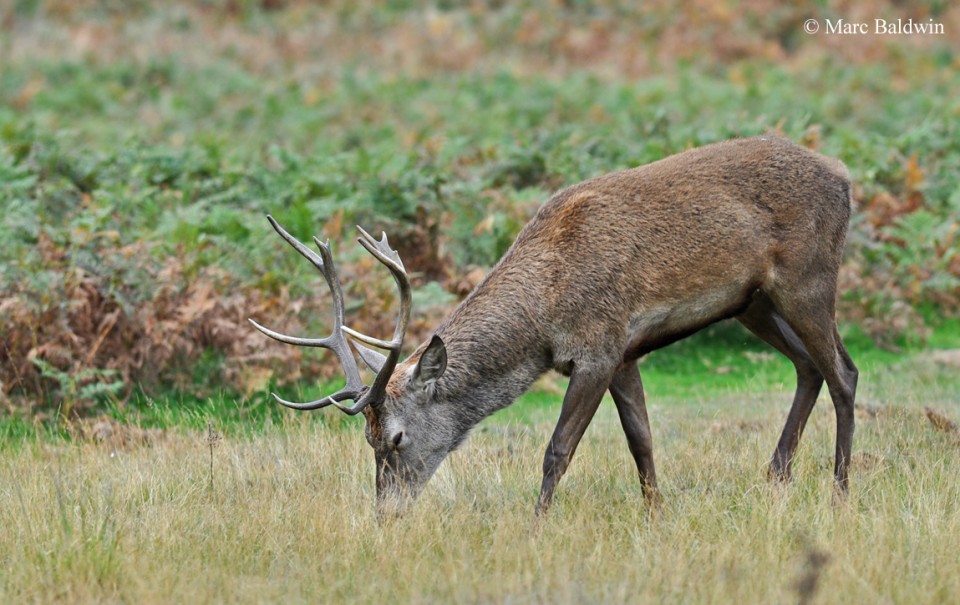
As we shall see, some subsequent authors have questioned these groupings and argued that Hoffman’s conclusions aren’t supportable; most literature still refers to these three feeding groups, however. I will avoid going into morphological and physiological details of the Red deer rumen, but sufficed to say that it seems less adapted to the digestion of fibrous forage than in deer typically considered browsers (e.g. Roe deer), although the matter is complicated by the discovery that the lining of the rumen can change its morphology (i.e. its structure and appearance) in accordance with the quality of the diet.
Why does any of this matter? Well, the amount of fibrous material in the diet dictates how long it takes to break down the plant material and how much nutriment the deer can extract from it. Food that is high in fibre is slow to digest and difficult to extract nutrients from – for deer, high fibre foods include grasses, sedges, heathers and ferns. As the fibre content decreases, the ‘digestibility’ increases. Medium-high fibre plants include tree leaves and shrubs, while herbaceous plants such as the forbs (clover, milkweed etc.) are low-fibre.
Browser or grazer?
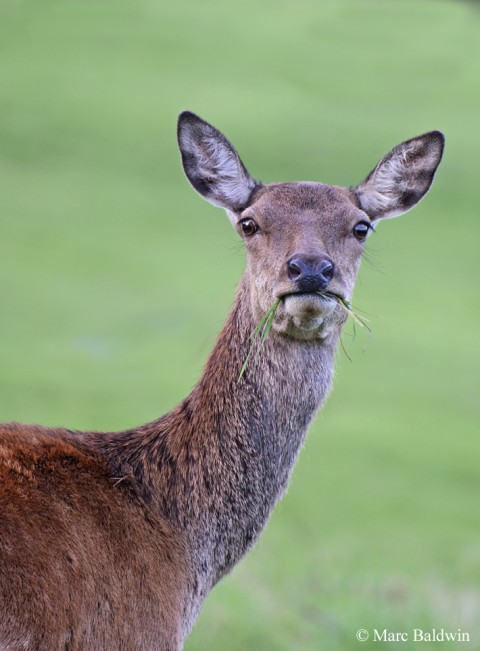
In a paper to the journal Mammal Review during 2001, Claudia Gebert and Helene Verheyden-Tixier, at the French National Institute for Agricultural Research in Toulouse, report on the variations in Red deer diet across Europe based on a survey of 13 scientific papers looking at rumen contents. The researchers found that these deer ate a wide variety of different plants, counting 145 different species, and that the variation in foods consumed was linked to environmental conditions and habitat. Surprisingly, despite the seasonal shifts documented by other researchers, this literature review found that only the consumption of seeds and fruit (e.g. acorns, apples, pears, beech-mast etc.) showed any clear seasonal patterns. Moreover, the amount of grasses and sedges eaten didn’t vary according to habitat, season or sex – they were consumed at a roughly constant level of 29% in all habitats and seasons.
Interestingly, the main finding of this review was that Red deer are primarily concentrate selectors (i.e. they browse more than they graze), with this feeding method accounting for 64% to 72% of their winter diet and 50% to 75% of their summer diet, depending on habitat. So, while the data generally support the classification of Red deer as ‘intermediate’ feeders because they browse and graze, they don’t succour the argument made by Hofmann that this species switches from browsing to grazing as the seasons change and the plants start to lignify. In their conclusion, the authors write:
“… Red Deer eat mainly concentrate food and do not switch from concentrate food to grass between seasons.”
Similarly, a survey of the diet of Red deer in the floodplain forests of the Morava River in the Czech Republic between October 2001 and November 2002 by Jarmila Prokesova provides support for these animals being more browsers than grazers, although it did also show some seasonality. Prokesova found that the majority of the deer’s food (71%) was obtained from the forest in the form of broadleaf tree shoots, leaves, buds and bark. The highest volume of this woody plant material was found in the diet during April and May. It seems that the deer had the broadest diets during the late summer and autumn, when they fed on fruits, forbs, grasses and crops (e.g. maize) in fields bordering the forest. Nonetheless, during all seasons it was the forest that was the most important feeding site for the deer and in his 2004 paper to the journal Folia Zoologica, Prokesova wrote:
“The analysis of feeding behaviour showed that the floodplain forest red deer were browse specialists [i.e. concentrate feeders] in all seasons of the year. Other food sources were less important.”
These studies reinforce the notion that Red deer are opportunistic feeders, eating the plants in proportion to their availability – if grasses are available all year round, and crucially both males and females are able to graze them, they’ll eat grasses all year round. While their diet is typically dominated by a few staple plant groups, part of being an opportunistic feeder is that you’re able to make the best of the prevailing conditions.
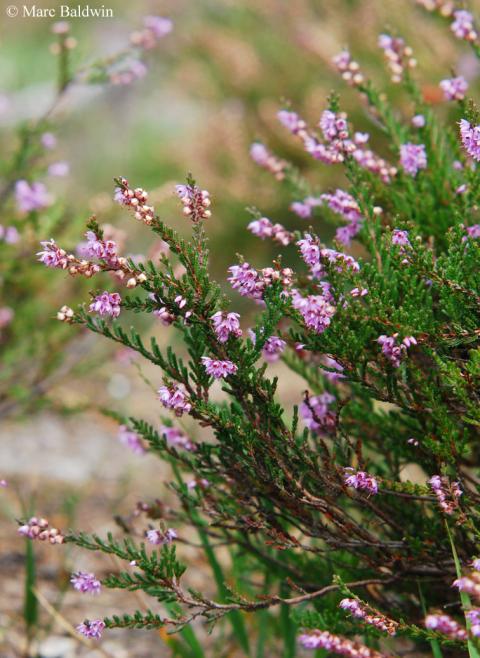
Types of vegetation taken
Grasses (e.g. Holcus, Deschampsia, Festuca and Agrostis) are the most important food source, comprising the bulk of the diet along with sedges and rushes (e.g. Carex, Eriophorum, Tricophorum, etc.). Indeed, work on the Rum deer has found that they preferentially opted for herb-rich Agrostis-Festuca grasslands (i.e. that comprised predominantly of bent and fescue grasses) over other vegetation types – in the summer they spent 78% of their feeding bouts on this grassland, while in the winter it was 65%. However, many grasses are only nutritious for a few weeks during the spring and summer; once the grass has flowered, the nutritional value -- which is the protein in the herbage -- is lost.
Consequently, although the deer may continue to feed on grasslands during the late autumn and winter, it typically offers less nutritious forage and the deer often switch their diet to include alternative food sources for the remainder of the year. Indeed, a study on the diet of Red deer in Scottish plantation forests between 1990 and 1993 showed a clear seasonality in the diet. Grasses formed 30% to 70% of the rumen contents in summer, while rushes, sedges, heaths, forbs, deciduous browse and conifers made up between 5% and 20%. During the winter, 30% to 60% of the rumen volume was heaths, mainly heather and blaeberry, with sedges and rushes accounting for a further 30%.
Ferns (e.g. Dryopteris and Blechnum), lichens, tree shoots and buds, herbs (namely forbs such as Galium and Potentilla), shrubs/heaths (e.g. blaeberry and heather, Calluna vulgaris) and bramble are staple during the autumn and winter. Bramble is an important component of the diet throughout the seasons because it remains green for most of the year and new growth begins early in the spring. In some areas -- most notably on Rum -- the deer will also feed on seaweed (predominantly Laminaria kelp, Rhodymenia red seaweed and green Fucus seaweed) during the winter, which provides a good source of nutrients and vitamins, including vitamins A, C, E, K, phosphorous, calcium, iron, copper, manganese and folate – it is also a good source of sodium (more information on the deer’s use of seaweed habitat can be found in the Habitat section above).
In woodland habitats, the browsing of tree and shrub shoots may account for 80% of the diet, while grass and heather form the bulk of the diet in moorland. In her 1991 book, Deer, Norma Chapman refers to a study of Red deer faecal pellets collected in Thetford Forest on East Anglia’s Norfolk-Suffolk border. The Thetford deer predominantly ate deciduous (e.g. oak, hawthorn, ash, birch and beech) leaves, grasses and bramble in the summer; grasses and bramble were also eaten during the winter, but the proportion of ivy in the diet increased during this season. Looking at the year as a whole, the study identified more than 21 different plant species eaten by the deer.
Agricultural crops will also be taken, if the opportunity arises, and with cereals and root crops targeted. A study of Red deer damage in the Exmoor area, by Jochen Langbein and Mark Rutter, found that at medium to high deer densities the deer took 1–12% of the winter wheat crop, 0–8% of the oat crop and 5% of barley. Jochen told me:
“… average losses to deer were less than 3%, though rather higher in a small number of fields directly next to wood etc.. Part of problem is groups of stags settling in cereals for part of the summer as also good shelter from disturbance by public.”
Perhaps more interestingly, were Langbein’s observations of Red deer raiding garden bird feeders for seed. In January 2017, Langbein posted video footage (above) of an adult Red stag (estimated to be at least 11 years old) using his antlers to knock bird feeders out of a tree in a Devon garden to his YouTube channel. The first section of the video, filmed in early December 2016, clearly shows the deer stretching to reach the seed feeder and, upon realising it could not access the seed inside, using its antlers to unhook the feeder from the branch causing it to fall to the ground, from where the stag promptly ate the spilled seed. Subsequent attempts by the same stag, this time in mid-January 2017, showed a much more proficient approach; the animal immediately and dextrously used its antlers to unhook the feeder.
Bark is sometimes eaten, generally during the winter months, and affected species include rowan (typically Sorbus aucuparia), beech (Fagus sylvatica), willow (Salix spp.), Norway spruce (Picea abies) and lodgepole pine (Pinus contorta). Over some parts of their range, bark stripping by Red deer can be a significant problem, especially in commercial pine forests. This subject will be discussed at greater length in an associated QA (in preparation), but the general findings suggest that the activity is not driven by nutritional requirements (stripped and non-stripped trees in the same area have very similar bark compositions), but may help the deer improve its digestive efficiency or get rid of internal parasites.
Red deer will graze lichens from tree bark and fence posts and will eat ivy, nuts, fungi, fruit (especially acorns and beech mast), berries and even holly and roses. Additionally, Red deer have been observed eating soil. Such "geophagia" (or geophagy) is thought to be a response to a mineral-poor diet as soil can provide the deer with essential nutrients such as calcium, sodium, iron and magnesium, all of which are important for efficient digestion and bone maintenance.
Difference between the sexes
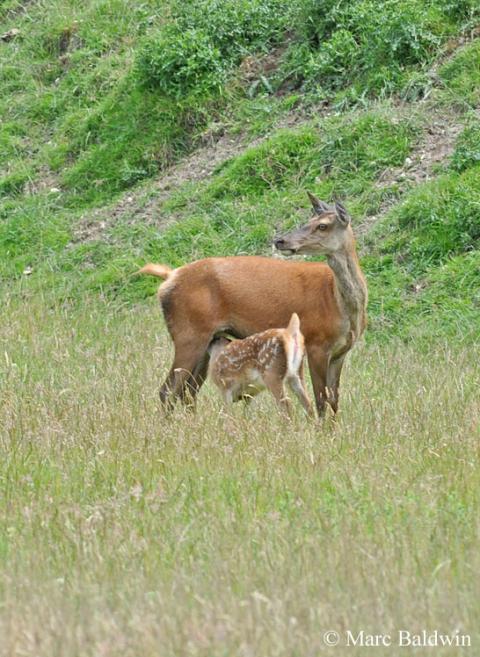
In some populations, there is a marked difference between the diet of stags and hinds and during a study on Red deer living on the Glenfeshie estate in Scotland’s Cairngorm Mountains, a team from the Institute of Terrestrial Ecology, headed up by Brian Staines, found that hinds ate more grass and less heather than stags. The hinds also chose more fine-leaved species, which are easier to digest than the broad-leaved species eaten by the stags. In their write-up of the study’s findings to the Journal of Applied Ecology in 1982, Staines and his team note that hinds also ate species higher in nitrogen (important for building proteins) than stags, although the overall rumen nitrogen content was the same for both sexes; the stags had large rumens containing lots of lower-nitrogen species, while hinds had smaller rumens with fewer, high-nitrogen, species. It appears that the areas in which the hinds fed were situated on ‘richer’ rocks (in terms of geology and soil quality) than those in which stags fed and, as such, the hinds opted for quality while stags opted for quantity.
So, why should this disparity in feeding behaviour exist between the stags and hinds? After all, as Staines and his colleagues note in their 1982 paper, the stags would be nutritionally better off if they fed on the same ranges and species as hinds. Well, research by the RDRG on Rum has shown that hinds move to more productive grassland prior to commencing lactation; their energy demand almost doubles at the start of lactation and in the weeks leading up to parturition they will double their food intake as a consequence. Staines and his co-authors point out that small-bodied hinds may be displacing the larger stags from these favoured feeding areas. The hinds have a smaller and narrower mouth, which allows them to reduce the average sward height to such an extent that the stags, with their larger mouths, can’t feed effectively in the area – in other words, the females crop the grass so tightly that the blades are too short for the males to get at.
So, the stags are forced into areas of poorer quality grazing where they consume more coarse forage. Fortunately, for the stags, being larger animals means they have a correspondingly larger rumen volume to cope with the coarse diet, which requires them to process a greater quantity of food if they’re to extract sufficient nutrients. Perhaps Rory Putman put it more eloquently than me in his 1988 book The Natural History of Deer, in which he explained:
“It would appear therefore that stags and hinds are actually selecting different foods, each adopting the foraging strategy appropriate to their body size, mouthpart size and ruminal physiology.”
It is important to note that seasonal and sex-related changes in the diet have not been documented in all populations. Indeed, dietary studies conducted in Europe and further afield have uncovered different feeding preferences and strategies.
Most blood-thirsty ungulate?
Finally, Cervus elaphus has earned something of a reputation for carnivory and in the 2007 edition of The Guinness Book of Records, the Red deer holds the record for “Most bloodthirsty ungulate”. The reason for this unenviable title was the discovery that deer on Rum sometimes kill and eat seabirds. In 1969, the now former chief warden of Rum, Peter Wormell, published a letter in the Deer journal in which he briefly described Red deer biting the heads off Manx shearwater (Puffinus puffinus) chicks. The following year, ornithologists found Arctic tern (Sterna paradisea) chicks with cleanly amputated wings and legs, while ringing chicks at a colony on Rum. A stakeout of the colony revealed that the island’s sheep were biting off the limbs and heads and eating them. In a bid to get a better understanding of the predation on birds by sheep and deer, Glasgow University biologist Robert Furness studied the tern colony on the island of Foula and the shearwaters on Rum.
Furness scoured the hills for corpses and, between 11th and 17th September 1987, he carefully studied the feeding behaviour of the Red deer. It transpires that the deer only attacked shearwater chicks, never the adults, and the attacks only occurred during the latter part of the chick-rearing period from August to late September. Moreover, it seems that the deer were primarily interested in the birds’ bones. On several occasions a hind was observed holding a chick, by its head, in her mouth before vigorously shaking it for a few seconds until the decapitated body fell to the ground. The hinds ate the head, leaving the remainder of the body untouched. In one instance, a young stag investigated the remainder of the corpse, severing the skin to remove the leg bones and those from the carpal (wrist) region – there was no significant removal of flesh or feathers by the deer.

All attacks by the deer ended in decapitation of the chick, but not all had additional bones extracted. The 20 deer in the area killed, on average, two birds per day removing around 12g (about half an ounce) of bone from each bird and, with an estimated 60 birds killed per season, Furness calculated that each deer could potentially gain 36g (1.3 oz.) of bone during the important pre-rut period.
It seems probable that the deer saw the chicks as a potential, albeit comparatively small, source of calcium in an environment where a staple food (e.g. heather) is typically low in calcium – heather on Rum also tends to be lower in nutrients than the same species growing on more nutrient-rich rocks elsewhere in Scotland. The results of Furness’ study were published in the Journal of Zoology during 1988, and in the paper he wrote of the phenomenon of deer eating shearwater chicks:
“… it may be an unusual habit, found only in peculiar circumstances where ruminants feed on mineral-deficient vegetation on which ground-nesting seabirds are present in high density.”
Reports of carnivory in Red deer aren’t limited to Rum. In his riveting 2000 book A Life for Deer, veterinarian John Fletcher describes seeing a deer knock-over rabbits infected with myxomatosis and ‘chew them up’, and others to chew antlers that were still attached to another stag. Similarly, in his excellent Kia: A study of Red deer, Ian Alcock talks about an Australian friend who told him of a Red deer stag that ate a dead sparrow that it found in the enclosure and, a couple of weeks later, the same deer caught and ate a frog from a small pond in the enclosure.
Alcock also points out that the late naturalist Frank Fraser Darling described deer eating frogs, while, in his 1890 Some Account of Jura Red Deer, Henry Evans wrote that not only will they chew the antlers and bones of dead deer, but large bits of skin have also been found in the stomachs of shot stags.
Making a meal of it

Before we leave the topic of feeding biology, it is worth taking a moment to consider the deer’s feeding behaviour. The biology and physiology of rumination is discussed at length in the main deer article, so I won’t reiterate it here. There are, however, some aspects of Red deer feeding behaviour that merit a mention. The first of these is the question of how much a deer can be expected to consume each day. There are very few references in the literature to the amount of food one might expect a deer to eat in a single sitting. I presume that this a reflection of several factors including that the digestive system size and morphology can change with season and diet; that there are five chambers involved in the digestive process; and because the amount eaten depends on the size of the animal, the quality of food available and the energetic requirements of the animal and it must thus vary according to both season and location. Consequently, I feel it is more useful to consider the energetic requirements – that is, the number of calories required.
Calorific requirements are also affected by season and size, but provide a better handle on energetics than stomach volume. In their contribution to Mammals of the British Isles: Handbook, 4th Edition, Brian Staines, Jochen Langbein and Tim Burkitt provide rudimentary daily energy requirements of 3,500 kcal (14,700 kJ) and 4,500 kcal (18,900 kJ) for a hind and stag respectively, during winter. The biologists quote much higher values for summer, with around 9,000 kcal (37,800 kJ) for a lactating hind and 11,500 kcal (48,300 kJ) for a stag. We can illustrate the seasonality here a little more clearly if we do a little mathematics. If we take an average stag to weigh about 200 kg (31.5 st), we see that during the winter the stag needs 22.5 kcal (94.5 kJ) per kilogram of body weight. That, however, changes dramatically during the summer (antler growing) months, when the stag needs some 57.5 kcal (241.5 kJ) per kilo.
Obviously this is a very crude comparison, but I think it illustrates the impressive energetic demands that the deer must live with. Incidentally, if you’re interested in how this compares to an ‘average’ human, the recommended daily calorie intake for an adult male is typically around 2,500 kcal (8,400 kJ), or 2,000 for a female – this increases by 300 – 400 kcal (1,260 – 1,680 kJ) per day during pregnancy. As an adult male, I weigh about 70 kg (11 st), which means I need 35.7 kcal (120 kJ) per kilo.
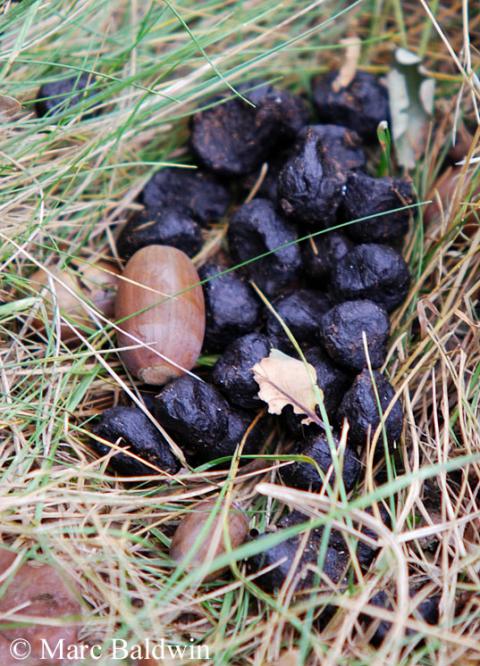
We have seen that hinds increase their food intake to correspond with their entry into lactation, but stags also show marked feeding cycles, with both sexes showing a voluntary reduction in food intake during the winter. In a paper to the British Journal of Nutrition during 1983, a team at the Rowett Research Institute in Aberdeen led by James Suttie report on the effects of winter food restriction on feeding behaviour of Red stags. The researchers split 12 hand-reared stags into two groups; one was given unlimited access to food and the other was given 70% of the amount eaten by the first group. The physiologists found that the deer on the restricted diet had reduced overall skeletal growth over those on the unrestricted diet; despite increasing their intake once the restriction was lifted and putting on weight rapidly, the end result was that the unrestricted deer grew larger than the restricted ones.
This study highlights how important adequate nutrition is during the winter months; even though the deer show a remarkable ability to compensate for low winter nutrition by increasing their food intake during the spring, they’re never able to fully ‘make up’ for that lost time. Suttie and his team suggested that this phenomenon might explain why Scottish hill stags are smaller than those found elsewhere in Scotland and English deer parks. The biologists also observed two periods of voluntary appetite loss; the first was during the rut and the second, which occurred in early spring, was associated with a resurgence of sexual activity.
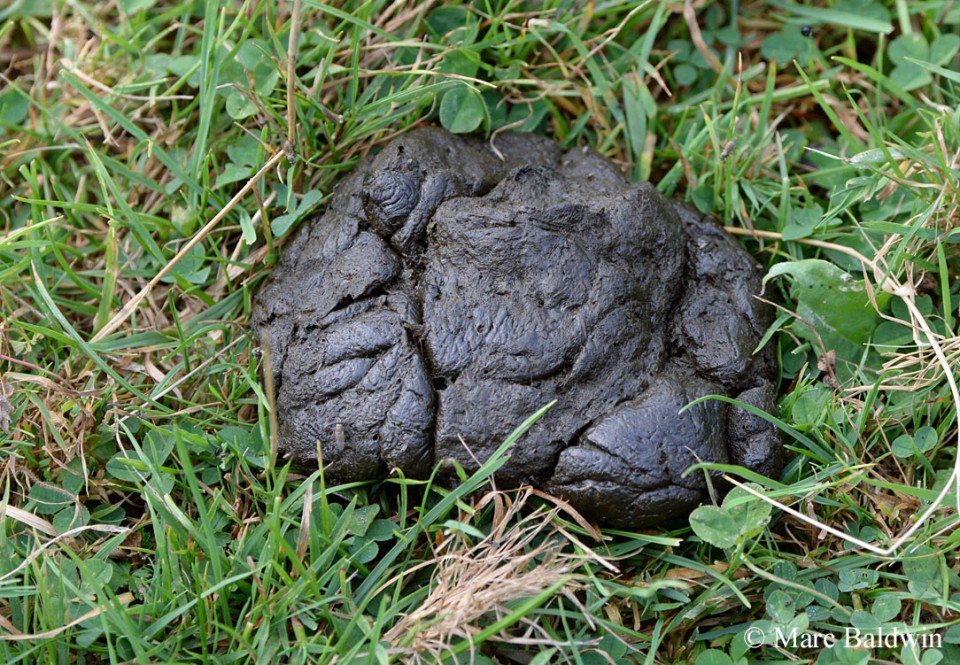
Once the food has been ingested, the deer will ruminate (i.e. regurgitate the food, at this stage referred to as cud, and re-chew it to further break down the material); the upper limit for rumination is generally assumed to be about nine hours, although most bouts are substantially shorter, lasting a couple of hours. Complete digestive passage (i.e. from ingestion to excretion) takes two-or-three days.
Skipping meals
A cessation of feeding during the rut is a well-documented phenomenon in Red deer and a study of Red deer at Norway’s Songli Research Station, by a team led by Atle Mysterud at the University of Oslo, found that rumen fill was lowest during mid-October, when males are at their lowest weights and female ovulation peaks. Mysterud and his colleagues proposed two theories to explain this lack of feeding: either the deer consider rest to be more beneficial than food (they need rest to compete for females and can’t rest if they’re feeding), or they are energetically drained by the rigours of the rut, which probably means they have a weaker immune system and thus stop feeding because they’re unable to deal with any parasites they might ingest with the food.
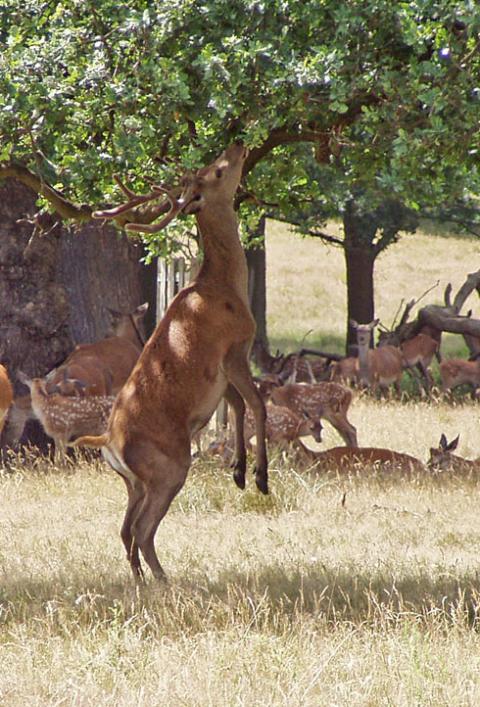
The biologists also found that younger stags had higher rumen fills than older ones, with rumen fill declining until the age of about six years, after which rumen fill was low and stable (i.e. seven-, eight-, nine-year-olds etc. all had about the same amount of food in their rumens). The reason for this is related to the different breeding strategies used by the deer at different ages (i.e. ‘capital’ vs. ‘income’ breeding as discussed in Breeding Biology).
It should be noted that, while an age-specific behaviourally-induced cessation of feeding seems to occur in some populations, the amount of food taken in during any given feeding bout can be affected by age regardless of breeding strategies. In 1998, Javier Perez-Barberia and Iain Gordon demonstrated that the amount of tooth wear understandably influences the amount of food eaten. Simply put, as deer get older they wear down their teeth, which makes them less efficient at grinding up plant material; this means that they swallow larger chunks of food than deer with more efficient teeth. The researchers found that deer with worn teeth ate less per ‘sitting’ and suggest that eating less may be a strategy to compensate for a less efficient grinding mechanism.
The idea is this: larger particles take longer to break down (more accurately, they have a larger ‘surface area to volume ratio’), so it’s better to have fewer of them at a time, so that more time and resources can be devoted to digesting them. If the rumen was flooded with large particles, the microbial ‘workforce’ would be spread more thinly and each particle would receive less ‘digestive attention’ and thus potentially yield fewer nutrients.
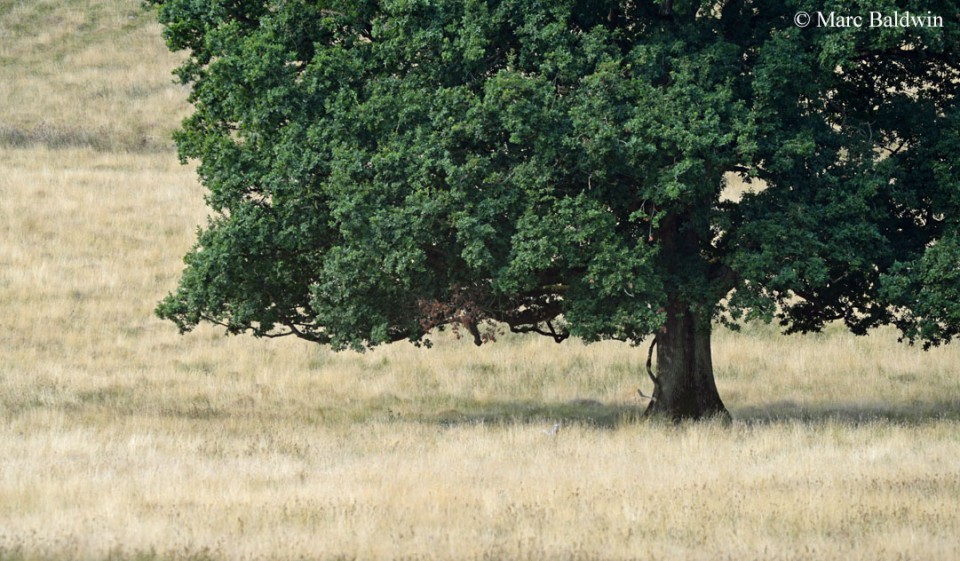
Feeding behaviour often involves standing on hind legs to pick higher twigs and bushes clean, which creates a browse line that can be 180cm (6ft) above the ground.